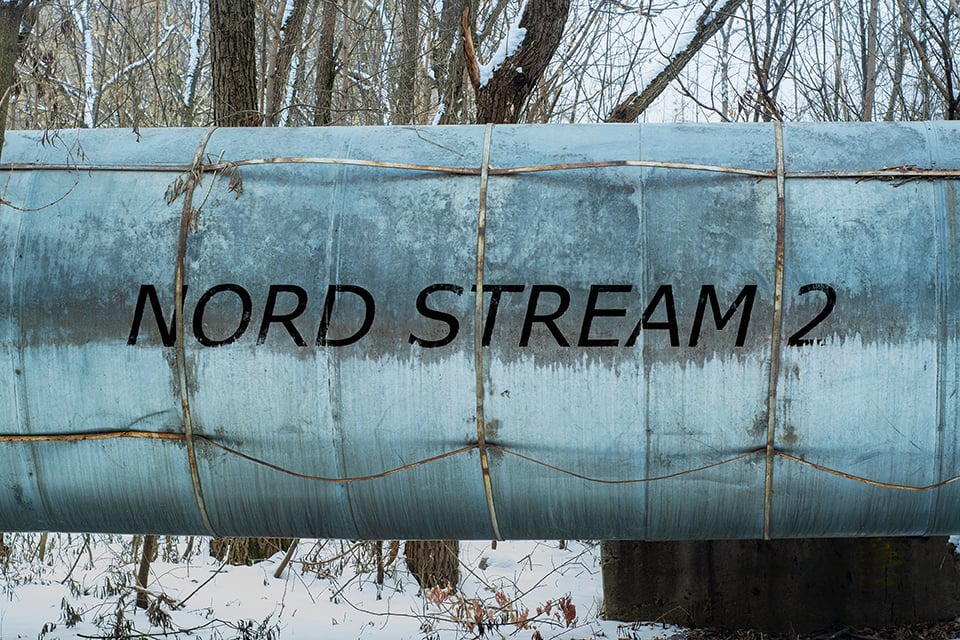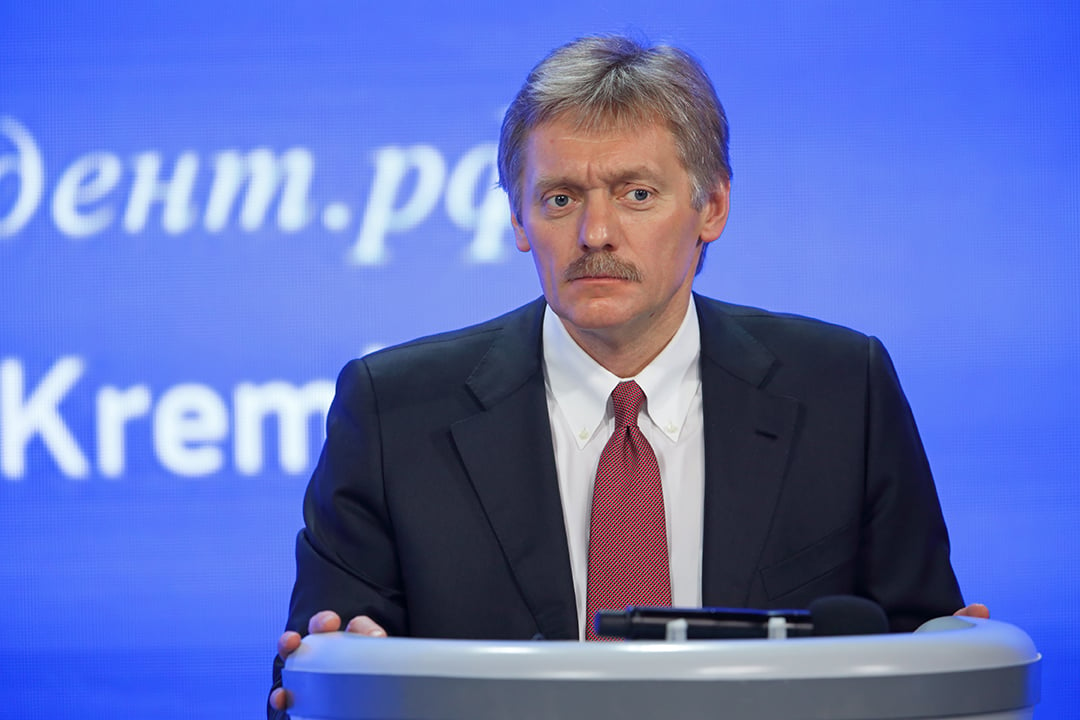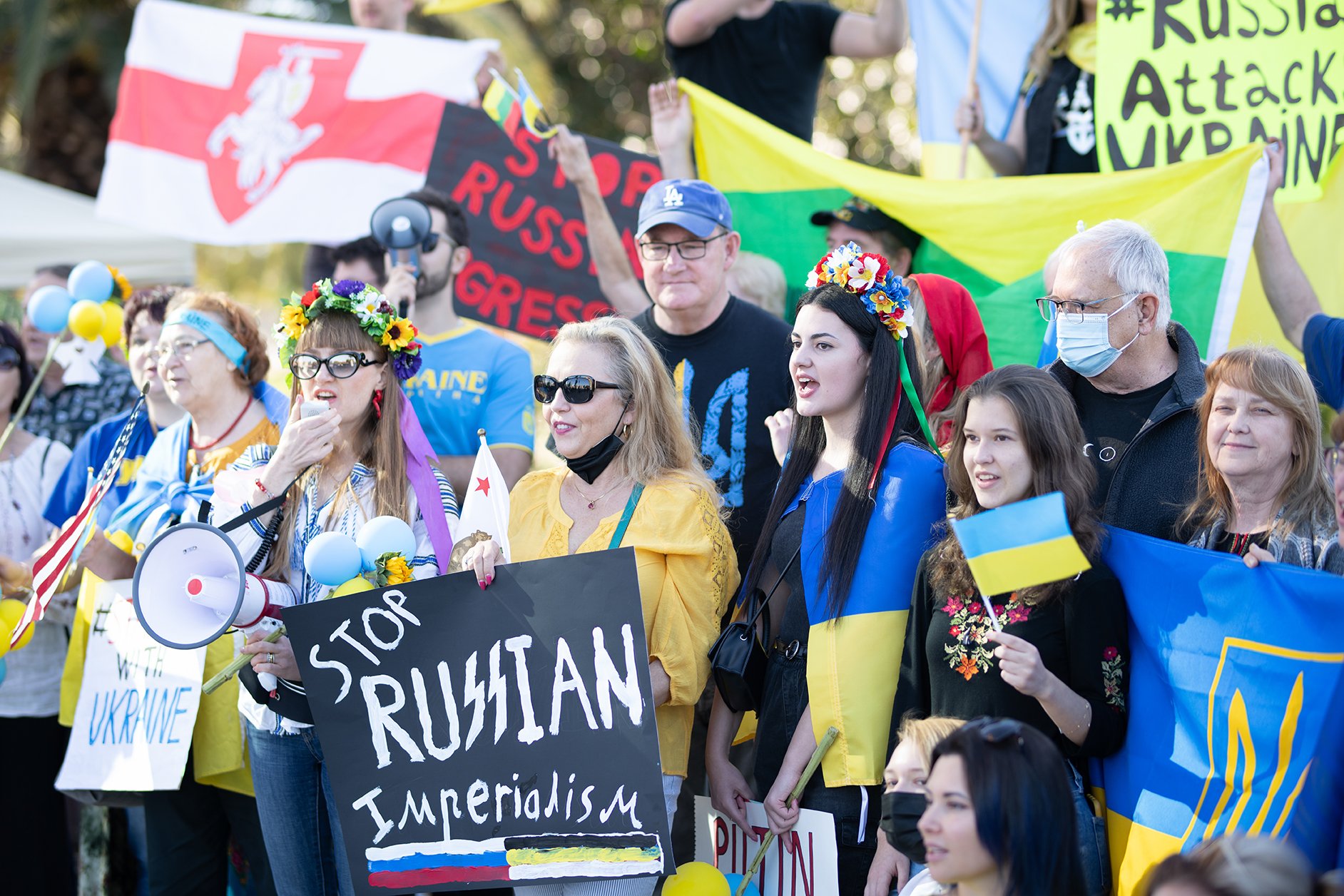Russian columns of armor were reported moving northward and westward through the Donbas overnight on Feb. 21-22.
Russian President Vladimir Putin, as of Feb. 22, sent an unknown number of troops he describes as “peacekeepers” into separatist-held areas of southeast Ukraine. The deployment was preceded by Russia’s formal recognition of the independence and sovereignty of the so-called Donetsk People’s Republic (DPR) and Luhansk People’s Republic (LPR); however, it is unclear whether the DPR and LPR leadership invited in Russian troops. The move will likely further inflame regional tensions, despite the presumed fact that the separatist administrations - as well as their actions - were already under the virtual control of the Kremlin.
Light-Touch Western Sanctions
In response, the EU and the US have already initiated a preliminary round of sanctions against Russia; however, it is immediately apparent that these sanctions fall well short of the harsh and sweeping economic sanctions promised in the event of an invasion of areas under Kyiv’s de facto control. US President Joe Biden signed an executive order late Feb. 21 prohibiting US citizens and entities from investing in either of the breakaway republics, refraining from sanctioning Russia directly.
EU officials previously indicated they would impose a package of sanctions in connection with Russia’s recognition of the separatist republics. While EU discussions are ongoing as of Feb. 22, Germany has unilaterally suspended certification of the controversial Nord Stream 2 pipeline rather than canceling it, leaving the door open for Russian compliance.

The announced sanctions are understandably lenient. Russia’s occupation of the Donbas falls into a grey area; in some respects, the ov¬ert movement of Russian columns of armor through the region formalized the long-suspected presence of Russian troops in the Donbas. The breakaway territories were already outside Kyiv’s sovereign control and the deployment of Russian troops doesn’t change that, though their presence may make it permanent. Additionally, the light-touch first round of sanctions leaves Western leaders with broad leeway to toughen them considerably in future if Russia takes further military action against Ukraine.
Russia’s Next Move
Russian and separatist rhetoric continues to set the stage for further direct Russian military action in Ukraine. Early on Feb. 22, the DPR and LPR declared the entirety of the Donetsk and Luhansk regions to be the territory of their nascent “republics” and demanded the withdrawal of Ukrainian forces from government-controlled areas of both regions.
While Ukrainian President Volodymyr Zelenskyy has firmly dismissed their demands, the presence of Russian troops greatly complicates potential Ukrainian responses to any provocations from the separatists. Russia could manufacture provocations in the Donbas in an attempt to either goad the Armed Forces of Ukraine into attacking Russian positions or to justify unilateral action against Ukrainian forces across the Line of Contact (LoC). Such provocations were witnessed throughout the day on Feb. 21 ahead of Putin’s speech recognising the breakaway regions.
Stage Set for Further Provocations

Should the Ukrainian military strike a Russian position – either deliberately or inadvertently – the likelihood of a broader conflict greatly increases. Kremlin spokesman Dmitri Peskov did little to assuage concerns that Russian and separatist forces were merely waiting for justification to launch an offensive against Ukrainian forces in the wider Donbas when he stated that Russia recognizes the DPR and LPR within the borders that the breakaway regions have themselves declared.
Furthermore, Moscow would arguably consider any Ukrainian military action against the separatists to be an attack on a “nation” with a mutual defence pact with the Russian Federation. Moreover, it is apparent that, in the event of such a conflict, Ukraine would face Russia and the separatists alone; any Western intervention will be diplomatic and retaliatory, rather than truly preventative.
Putting aside Russia deploying troops in separatist areas, the formal recognition of the regions alone effectively buries the already near-dormant Minsk Accords upon which the hopes for a peaceful settlement in the Donbas were based. Russian officials have made it clear that the Minsk Agreements are “no longer on the agenda” of future Normandy format talks with France, Germany, and Ukraine. A diplomatic solution seems to be further away than ever. It appears increasingly likely that Putin intended this intervention all along and had little intention of negotiating in good faith with the West.
Impact in Kyiv

The military escalation in the Donbas will likely have little impact on the security environment outside of the wider Donbas region, including in Kyiv. Despite the sharp escalation in tensions, Ukraine is arguably in the same physical situation as prior to Russia’s recognition: the Russian-occupied areas of the Donbas remain outside their effective control. Ukraine has refrained from ordering a military mobilization, with officials stating that mobilizations or a declaration of martial law would only be considered in the event of an invasion of government-controlled areas. Ukraine is attempting to walk the tightrope of seeking to deescalate tensions through the Normandy Format, while standing firm in the face of Russian aggression without being goaded into a military escalation.
In Kyiv, the broadest negative impact is likely to come from increased cyberattacks. Anonymous cyberattacks in recent weeks have targeted Ukraine’s Ministry of Defense and several banks. Cyberattacks targeting utility infrastructure or telecommunications nodes may precede Russian military action; however, cyberattacks will likely take place even in the absence of any physical attacks.
Furthermore, despite concerns that potentially violent pro-Russia protests would erupt in cities with large ethnic Russian populations, such have failed to emerge. Rather, cities that showed some Russian fervour at the start of the crisis in Ukraine in 2013 and 2014, such as Kharkiv and Odessa, have recently seen large peaceful protests denouncing Russian propaganda and the occupation of the Donbas. Further such protests are highly likely in major urban centers throughout Ukraine and could prompt significant disruptions in central areas of major cities, especially Kyiv. However, media perceived to be overly friendly or sympathetic towards the Kremlin will likely be protested; Russian businesses in general are unlikely to be targeted.
Advice
Anticipate the situation deteriorating and plan ahead.
- Consider deferring travel to Ukraine and Ukrainian border areas of Russia and Belarus and withdrawing staff until the situation stabilizes.
- If planning to leave, book flights as early as possible and arrive at the airport early to prevent your seat from being allocated to a standby passenger; allow additional time for processing.
- Maintain contact with your diplomatic representation.
- Ensure that contingency plans (emergency, evacuation, communication, and movements plans) are reviewed and regularly updated.
- Consider and prepare for the possibility of stand fast / shelter in place options.
- Stock up on essential items & non-perishable provisions.
- Pack a go bag.
- Ensure personnel keep key items (communications, contact numbers, identification, cards & cash, medication, etc.) close to hand and readily available.
- Make sure cell phones and electronics are fully charged.
- Maintain flexible itineraries, monitor local media for updates on the situation, and be prepared to change travel plans at short notice in response to developments.
- Do not take photographs of security force facilities or units. Avoid discussing military movements or the political situation with strangers.
- Remain polite and nonconfrontational if questioned by security forces.
- Check trusted local sources for updated information on potential travel disruptions.
- Be discreet when discussing the situation, including on social media.
Additional Expert Insights
Intelligence Briefing: Ongoing Tensions Between Russia & Ukraine (Feb. 2022) | Watch On-Demand
Intelligence Briefing: Risk Assessment of Rising Tensions between Russia & Ukraine (Dec. 2022) | Watch On-Demand
For an in-depth analytical assessment of the Russia/CIS region, request a copy of the 2022 Global Risk Forecast.
Related Intelligence Alerts
Critical | 22 Feb 2022 | 12:20 pm UTC | Russia, Ukraine: Tensions likely to escalate further in coming days as Russia deploys troops to eastern Ukraine Feb. 22
Critical | 22 Feb 2022 | 07:08 am UTC | Russia, Ukraine: Russian forces reported entering separatist-held areas of eastern Ukraine as of early Feb. 22
Author(s)

Tumi Wallace
Manager, Intelligence, Europe, Russia/CIS
Tumi is an Intelligence Manager focused on Eastern Europe and Central Asia. He studied Political Science and History, followed by Postgraduate Law at the University of Cape Town. Tumi has previous...
Learn More


